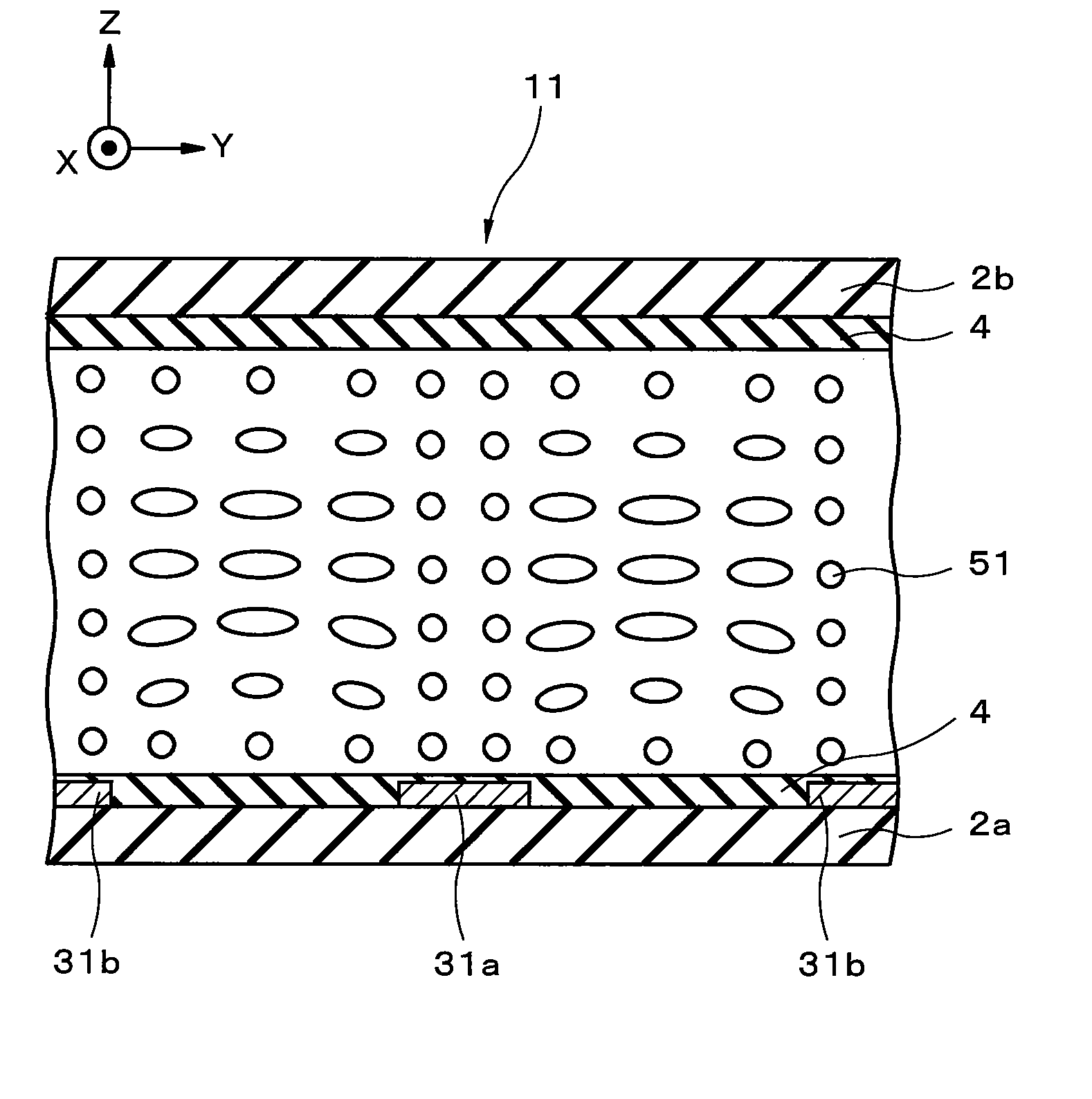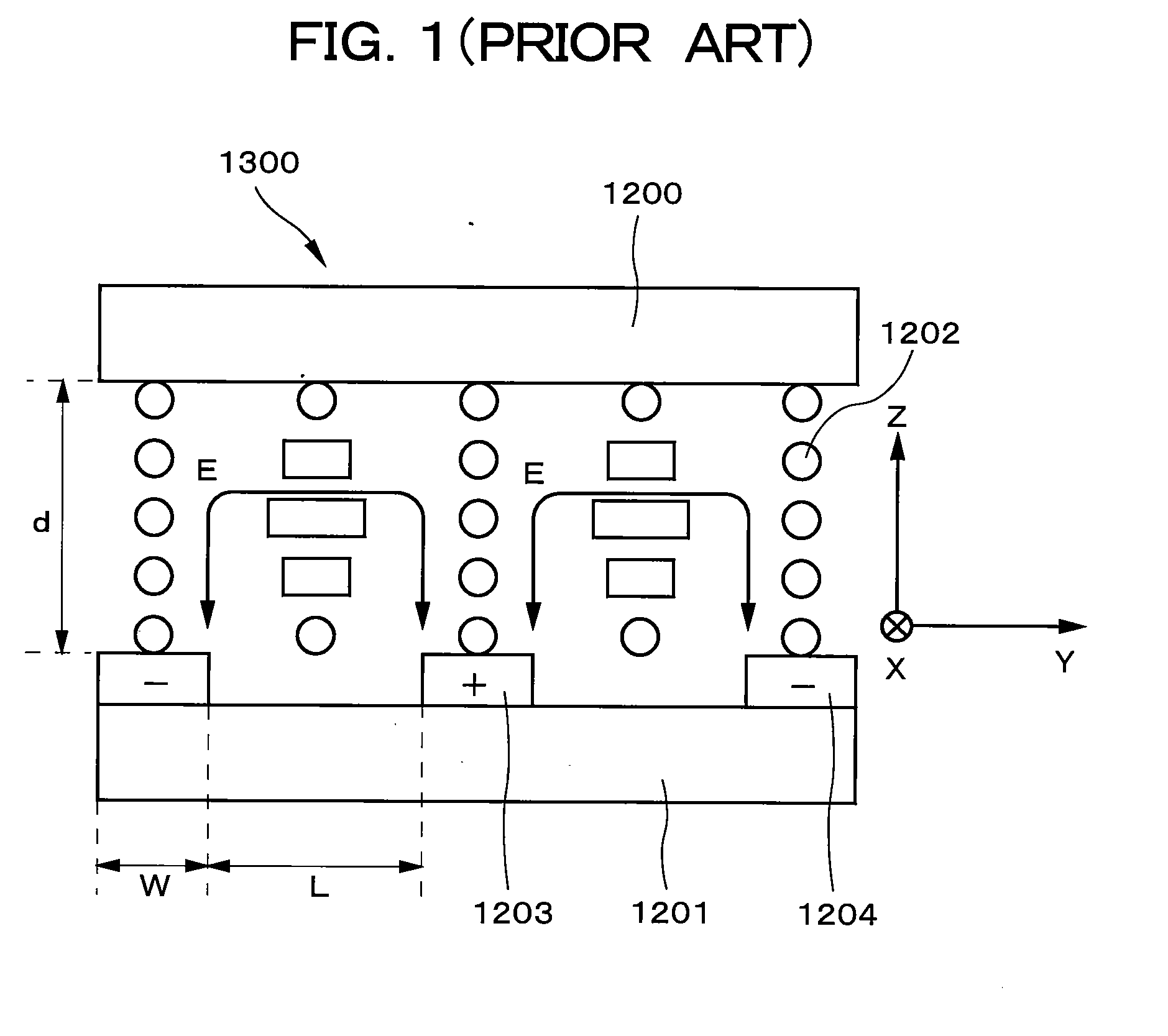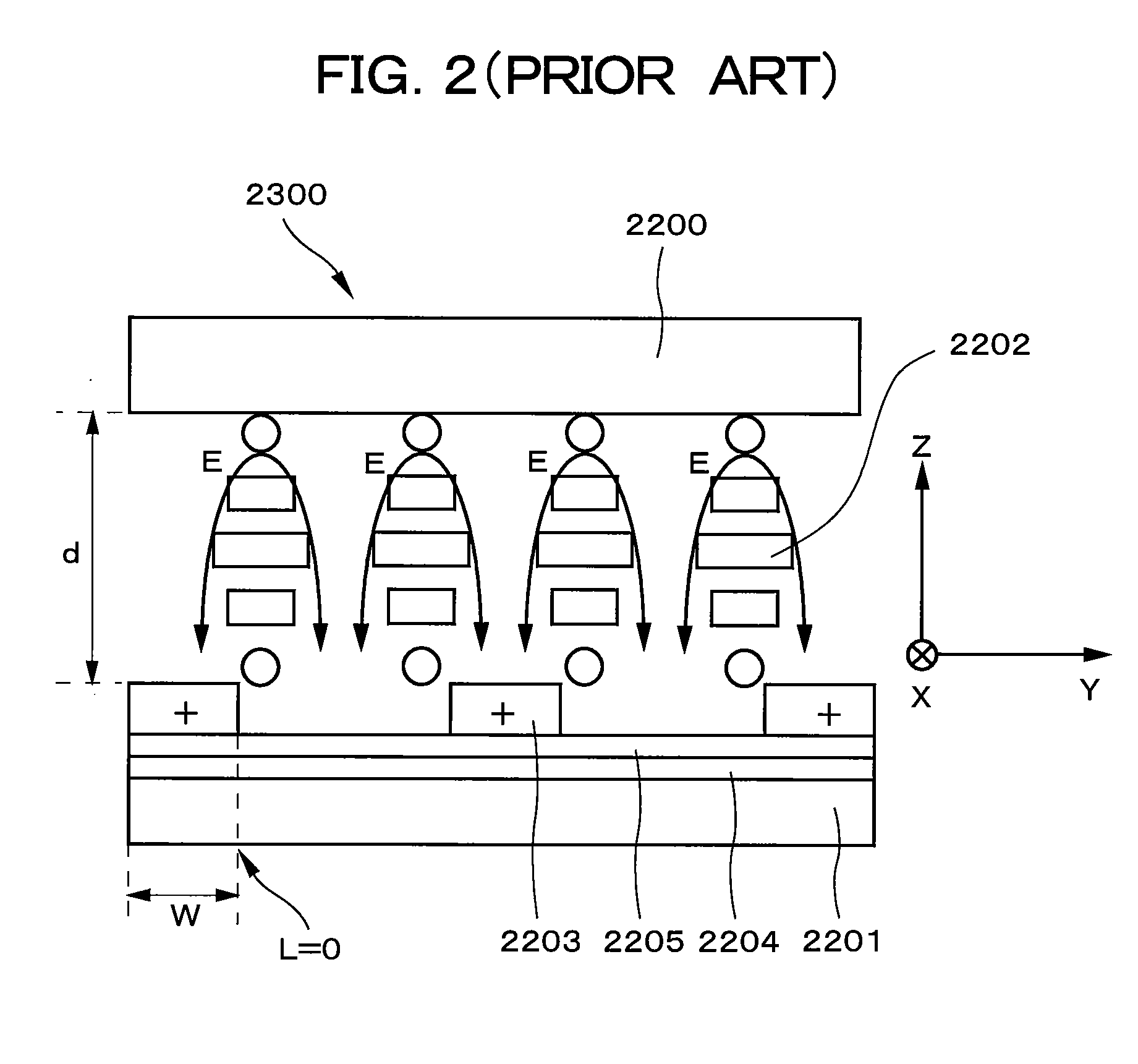Liquid crystal display device and terminal device that uses same
a liquid crystal display device and terminal technology, applied in liquid crystal compositions, instruments, chemistry apparatus and processes, etc., can solve the problems of liquid crystal molecules not being able to stand completely upright, the inversion of grayscale was relatively insignificant, and the above-mentioned conventional liquid crystal display devices
- Summary
- Abstract
- Description
- Claims
- Application Information
AI Technical Summary
Benefits of technology
Problems solved by technology
Method used
Image
Examples
first embodiment
[0094] The liquid crystal display device, and the terminal device that uses the liquid crystal display device according to embodiments of the present invention, will be described in detail hereinafter with reference to the accompanying drawings. The liquid crystal display device, and the terminal device that uses the liquid crystal display device according to the present invention, will first be described. FIG. 3 is a sectional view showing a state in which a voltage is applied in the liquid crystal display device according to the present embodiment, FIG. 4 is a sectional view showing the orientation state of liquid crystal molecules when a voltage is not applied between the shared electrode and pixel electrode that are constituent elements of the present embodiment, and FIG. 5 is a perspective view showing a terminal device equipped with the liquid crystal display device according to the present embodiment.
[0095] In the liquid crystal display device 1 according to the present embod...
second embodiment
[0138] The liquid crystal display device according to the present invention will next be described. FIG. 21 is a sectional view showing a state in which a voltage is applied in the liquid crystal display device according to the present embodiment. FIG. 22 is a sectional view showing the orientation state of liquid crystal molecules when a voltage is not applied between the shared electrode and pixel electrode that are constituent elements of the present embodiment. FIG. 23 is a graph obtained by measuring the voltage-transmittance characteristics in a region that has a diameter of 100 μm and includes an area above the electrodes and between the electrodes.
[0139] As shown in FIG. 21, the liquid crystal display device 12 according to the present embodiment differs from the liquid crystal display device 1 of the first embodiment in that a pixel electrode 32a and a shared electrode 32b having a width of 1.5 μm are used instead of a pixel electrode 3a and a shared electrode 3b having a w...
third embodiment
[0146] The liquid crystal display device according to the present invention will next be described. FIG. 26 is a graph obtained by measuring the voltage-transmittance characteristics in a region that has a diameter of 100 μm and includes an area above the electrodes and between the electrodes in the liquid crystal display device according to the present embodiment.
[0147] The liquid crystal display device according to the present embodiment differs from the liquid crystal display device 12 of the second embodiment in that a pixel electrode and a shared electrode having a width of 1 μm are used instead of a pixel electrode 32a and a shared electrode 32b having a width of 1.5 μm. The gap between the pixel electrode and the shared electrode, i.e., the inter-electrode distance, is set to 1 μm in the present embodiment, whereas this distance was set to 3.8 μm in the second embodiment. The cell gap is 3.5 μm, as in the second embodiment. Specifically, the present embodiment differs from th...
PUM
 Login to View More
Login to View More Abstract
Description
Claims
Application Information
 Login to View More
Login to View More - R&D
- Intellectual Property
- Life Sciences
- Materials
- Tech Scout
- Unparalleled Data Quality
- Higher Quality Content
- 60% Fewer Hallucinations
Browse by: Latest US Patents, China's latest patents, Technical Efficacy Thesaurus, Application Domain, Technology Topic, Popular Technical Reports.
© 2025 PatSnap. All rights reserved.Legal|Privacy policy|Modern Slavery Act Transparency Statement|Sitemap|About US| Contact US: help@patsnap.com



